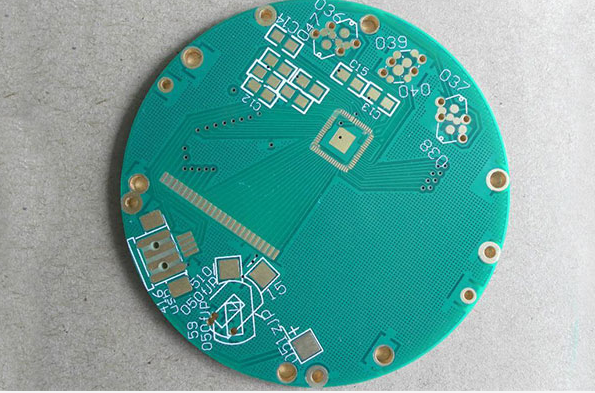Read the PCB resin plug hole production process in one article
PCB resin plugging is a process that has been widely used and favored in recent years, especially for high-precision multilayer boards and products with larger thicknesses. Some problems that cannot be solved by plugging the holes with green oil and pressing and filling the resin, people hope that they can be solved by plugging the holes with resin. Due to the characteristics of the resin itself, people still need to overcome many difficulties in the manufacture of the circuit board in order to make the quality of the resin plug hole better. Let us take a look at the PCB resin plug hole production process!
One: The outer layer production meets the requirements of the negative film, and the through-hole thickness-to-diameter ratio is ≤6:1.
The conditions that need to be met for the negative film requirements of the PCB board are:
1. The line width/line gap is large enough
2. The maximum PTH hole is smaller than the maximum sealing capacity of the dry film
3. The thickness of the PCB is less than the maximum thickness required by the negative film.
4. Boards without special requirements, such as: partial electro-gold board, electroplated nickel gold board, half-hole board, printed plug board, non-ring PTH hole, board with PTH slot hole, etc.

PCB inner layer production - pressing - browning - laser drilling - debrowning - outer layer drilling - copper sinking - whole board hole filling plating - slice analysis - outer layer pattern - outer layer acid etching - outer layer AOI -Follow-up normal process.
Two: The outer layer is made to meet the requirements of the negative film, and the thickness-to-diameter ratio of the through hole is greater than 6:1.
Since the through-hole thickness-to-diameter ratio is greater than 6:1, the copper thickness requirement of the through-hole hole cannot be met by filling and electroplating of the whole board. Copper plating to the required thickness, the specific operation process is as follows:
Inner layer production - pressing - browning - laser drilling - debrowning - outer layer drilling - copper sinking - whole board hole filling plating - full board plating - slice analysis - outer layer graphics - outer layer acid etching - follow-up Normal Process
Three: The outer layer does not meet the requirements of the negative film, the line width/line gap ≥ a, and the thickness-to-diameter ratio of the outer layer through hole ≤ 6:1.
The production of the inner layer of the circuit board - pressing - browning - laser drilling - debrowning - outer layer drilling - copper sinking - whole board hole filling plating - slice analysis - outer layer pattern - pattern plating - outer layer alkaline etching - Outer AOI - Follow-up normal process.
Four: The outer layer does not meet the requirements of the negative film, line width/line gap Inner layer production - pressing - browning - laser drilling - debrowning - copper sinking - whole board hole filling electroplating - slice analysis - copper reduction - outer layer drilling - copper sinking - full board electroplating - outer layer graphics - Pattern plating - outer alkaline etching - outer layer AOI - follow-up normal process. PCB resin plug hole production process: first drill the hole, then plate the hole, then plug the resin for baking, and finally grind (grind). The polished resin does not contain copper, and it needs to be turned into PAD on a layer of copper. This step is done before the original PCB drilling process. First, the fortress hole is processed before drilling. For other holes, follow the original normal process.
When the plug hole is not properly plugged and there are bubbles in the hole, the bubbles are likely to burst when the PCB board passes through the soldering furnace because of easy moisture absorption. In the PCB resin plug hole production process, if there are bubbles in the hole, these bubbles will be discharged by the resin during baking, resulting in a situation where one side is concave and the other is convex. This kind of defective product can be directly detected. Of course, if the PCB board that has just been shipped from the factory has been baked during the loading process, there will be no bursting of the board under normal circumstances.